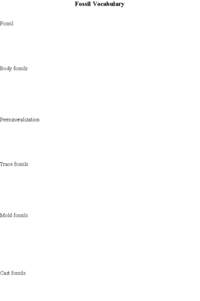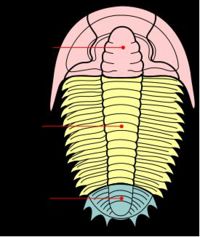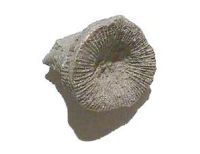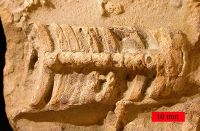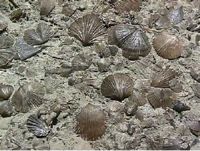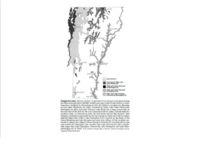A Rock To Remember/Fifth Grade
Biology in Middle Schools home | |Elementary School sister project
Contents
- 1 Primary biological content area covered
- 2 Activity 1: Make Your Own Fossils
- 3 Materials
- 4 Handouts
- 5 Description of activity
- 6 Lesson plan
- 7 Potential pitfalls
- 8 Literature connections
- 9 Connections to educational standards
- 10 Next steps
- 11 Citations and links
- 12 Activity 2: Formation of Lake Champlain: A Geological Time Line
- 13 Materials
- 14 Pre-Class Work
- 15 Description of activity
- 16 Lesson plan
- 17 Potential pitfalls
- 18 Math connections
- 19 Literature connections
- 20 History Connections
- 21 Connections to educational standards
- 22 Next steps
- 23 Citations and links
Biology In Middle Schools is a Saint Michael's College student project. Link under 'toolbox' for a printer-friendly version. Click on handouts to print full resolution versions. Please see Wikieducator's disclaimer, our safety statement, and the Creative Commons licensing in English and in legalese.
Primary biological content area covered
• Formation of Lake Champlain
• Vermont Geology
• Fossils
Activity 1: Make Your Own Fossils
Materials
• clay
• plaster of Paris
• water
• yogurt cups or another type of small cup
• objects to fossilize such as shells, twigs, etc.
Handouts
Here is a small vocab handout to help the students to understand words that will be used constantly in the lecture and activity. This can also be used as a way of quizzing students on how well they understand the fossilization process.
Description of activity
1) Line the bottom of the yogurt cup with about an inch or two of clay
2) Stick the "fossilized objects" into the clay so that they make an impression in the clay
3) Remove the objects from the clay
4) Make plaster of Paris by adding water or by following the instruction on the package
5) Pour a layer of plaster of Paris over the clay in the yogurt cup
6) Wait for the plaster of Paris to dry (maybe overnight) and cut away your yogurt cup
7) Peel away the clay and you will see the "fossils" of your objects in the plaster of Paris or your newly formed "rock"!
Lesson plan
So what are fossils anyway?
Fossils are formed when a piece of organic matter becomes stuck in mud or water and over time, layers of rock form above it. Organic matter means anything that is alive or was alive at one point, like a leaf or trilobite. Because it is in water or mud, it will not be completely decomposed and so pieces of the specimen will be preserved. Then, over many millions of years sedimentation happens (the layering of rocks). Rocks start out as fine particles of mud and sand and as they layer on top of our fossil, they become heavy and put immense pressure upon the bottoms layers. This pressure turns them into solid rock. The plaster of paris is like adding another layer to our bottom layer of clay. Sometimes minerals will dissolve the animal remains that is our fossil. Similarly the plaster of paris will fill in the area and become an exact copy of the object, but made with a different material.
Fossil page for more details on fossils
What are sedimentary rocks?
Sedimentary rocks are layer rocks. Over time, layers of sand, mud, and minerals build up and harden with intense pressure to form a solid rock. The material of the layer depends on what was in the environment at the time the layer was created. Scientists called geologists and paleontologists can look at the layers in sedimentary rocks to figure out how old a fossil is. If the fossil was found in one of the lower layers it is probably older than a fossil found in a layer closer to the top.
What forms the different types of sedimentary rocks that are found in Vermont?
clay particles--> shale
sand particles--> sandstone
remains of marine organisms, shells, some chemical precipitation-->limestone
The Vermont State Fossil: Charlotte the Whale
Vermont had once been home to a salt-water sea. How do we know? Because of fossils!
Vermont State Fossil
Types of Fossils we find in Vermont
See images
Trilobite-- 540 million years ago. Arthropods of the sea
Coral-- 650 million years ago to present. Sea organism
Cephalopod-- 540 million years ago to present, chambered Nautilus is one. Sea mollusk
Gastropod-- 480 million years ago. sea mollusk, like snails and slugs
Brachiopods-- 500 million years ago. "Lamp shells"
Potential pitfalls
Things can get messy, so use newspaper when pouring the plaster of Paris. Keep the projects out of the way until they are completely dry.
Literature connections
-Jurassic Park by Micheal Crichton
Connections to educational standards
S5-6:47 Students demonstrate their understanding of Processes and Change over Time within Earth Systems by…
•Determining the relative age of fossils within sedimentary rocks from their location in the strata (i.e. which fossils within a sequence are older).
Next steps
Take a trip out to the Lesser Quarry.
Plan for a warm sunny day for this trip and be sure to bring lots of water, bug spray, and sunblock.
Allow the kids to find fossils and describe to them the connection to modern creature that the fossils have.
Have the students note the different layers in the rock. Explain that the sedimentary rocks they see are limestone.
If you are up to it you can do a test with a drop of HCl on the rock.
If the rock bubbles it is composed of calcite (limestone).
Make sure that no fossils are removed from the quarry, but pictures are just as good.Lessor Quarry Site
For a different look at archaeology try looking at Curse of the T-Rex, a NOVA presentation
Citations and links
Activity 2: Formation of Lake Champlain: A Geological Time Line
Materials
-Several large cardboard boxes cut up into equal size rectangles (the actual number and size is relative to the classroom in which it will be placed)
-1 pack of multi-colored Construction Paper
-One roll of string
-One Container of Thumbtacks (if nervous about any hazzard to children a stapler can be substituted.)
-Container of Sharpies
Pre-Class Work
The actual time line itself, the pieces of cardboard, should be setup prior to the class. This ensures everything is ready to go by the start of class. The time line should go the length of the one wall of the classroom, and should stand out enough so that it can be seen easily. In order to make things a bit easier also premake a couple of "time-markers" for certain eras on the timeline. Some good ones to do would be the halfway mark, the three quarter mark, etc. These would make the students task seem less daunting.
Description of activity
-This activity is meant to help strengthen ideas already instilled upon them from an earlier class. This activity is meant ot show them conceptually that most of the physical changes in the world around them have only happened recently in the history of the world. They will also be tested on their ability to place important events in their proper place on the scale of time represented.
Lesson plan
-To begin the class have the students list some important events in the geological history of vermont or the world. Perhaps throw in some important historical dates as well to help other subject areas.
-List each event on the board, then try to have the students try to recall the dates of each event as well, although that may not be needed. If you wish to ncourage more participation have the students write each event on the board instead.
-Next assign each student to a certain event.
-On a piece of construction paper,(or a piece of plain white paper later to be attatched to construction paper) have each student write their event and if you see fit a brief 1-2 sentence description of the event. Depending on the event there may or may not be a description needed. Special note: If you wish a drawing can also be include in this process.
-Now on the time line have them try to fist find out where the "time-markers" belong on the line and place those their accordingly by hanging them with string stapled to the top of the marker and stuck/stapled into the time line itself.
-Now as a class have each of them try to find out where their events would be placed. A good way to start would be to have them try to line themselves up chronologically.
-Once this is all done your class should now be able to visually see the geological history of the area and understand how recent most of it really is. Plus on parents day you will be able to show off the work of your students to their parents.
Potential pitfalls
Avoid repetition of events and allow all students to participate.
Math connections
This activity will allow students to understand fractions conceptually by placing evets at the appropriate place on the time line.
Literature connections
-Under New England by Charles Ferguson Barker
History Connections
This activity will allow students to recall important dates and events in the history of America.
Connections to educational standards
H&SS5-6:5 Students develop reasonable explanations that support the research statement by:
• Organizing and displaying information in a manner appropriate to the research statement through tables graphs, maps, dioramas, charts, narratives, posters, time lines, models, simulations, and/or dramatizations.
M5:1 Demonstrates conceptual understanding of rational numbers with respect to:
• Whole numbers from 0 to 9,999,999 through equivalency, composition, decomposition, or place value using models, explanations, or other representations
S5-6:47 Students demonstrate their understanding of Processes and Change over Time within Earth Systems by:
• Identifying examples of geologic changes on the earth’s surface, where possible, in the local environment (include slow and fast changes).
Next steps
-Take a trip to the Perkins Museum at the University of Vermont. There they can see exactly how the area has changed. Also talk about the whale skeleton that was found and connect that to how this Atlantic at one point was connected to Lake Champlain.
Citations and links
Johnson, Charles, W. 1998. The Nature of Vermont: Introduction and Guide to a New England Environment. University Press of New England, Hanover, NH

